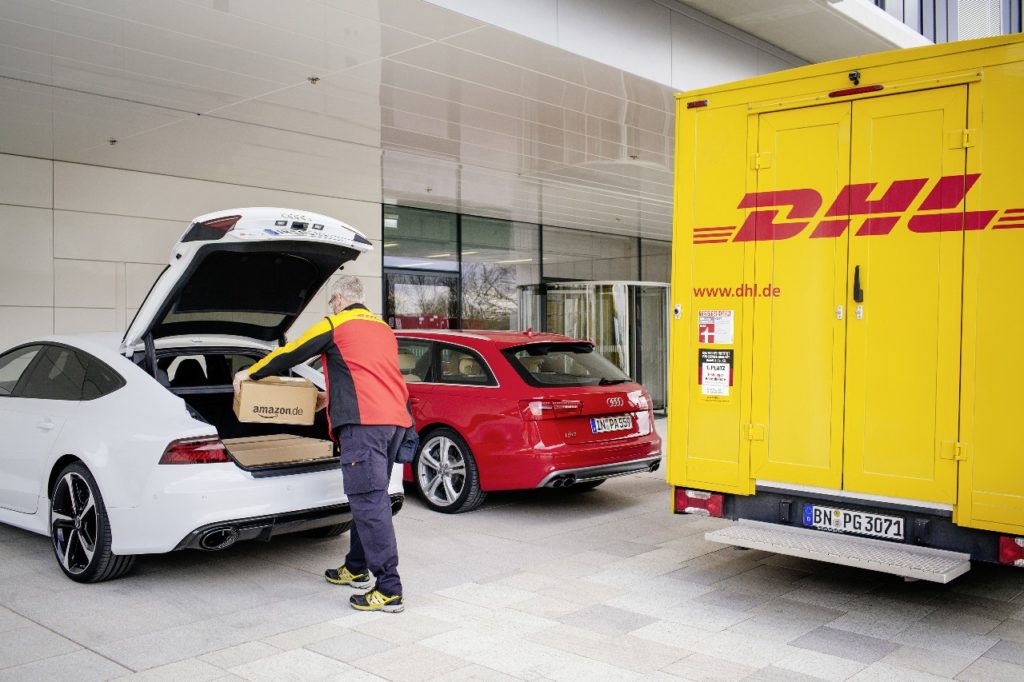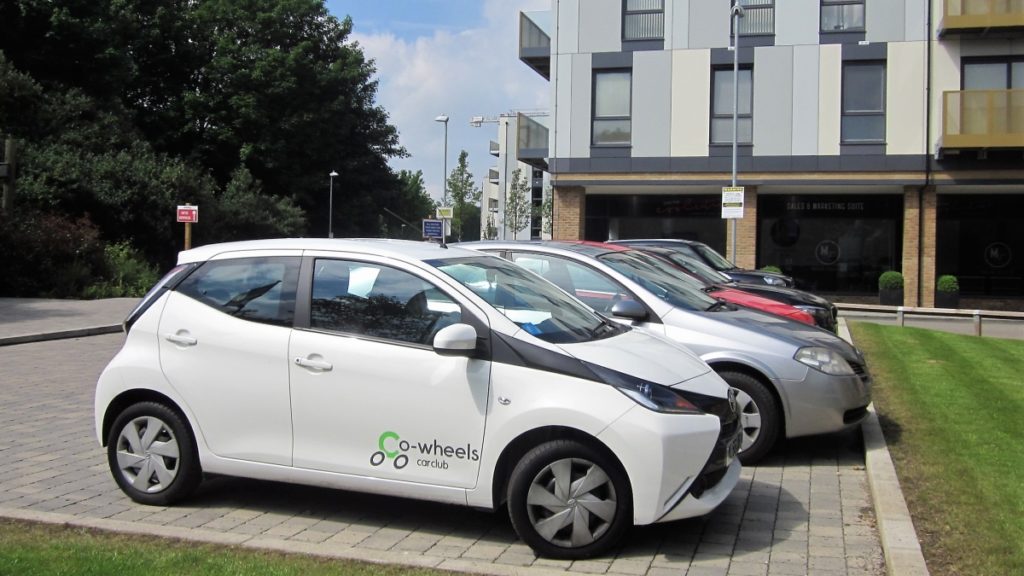The mobility revolution is already here – why parking is leading the way into the future of mobility
With road traffic at levels not seen in the UK since the 1950s, now seems like the perfect time to take stock of where the future of mobility lies. The disruption caused by COVID-19 is driving innovation around contactless and remote transactions, and undoubtedly the world on the other side of this hiatus will look different from the one before. This pause provides opportunities for us as a society to rethink how we travel and take steps that move us towards a smarter future.
In contrast to the seemingly faraway promises of self-driving cars and hydrogen cars, there is one area within mobility that has already started to embrace our ‘connected’ future and is leading the way for other areas of the industry to follow – parking.
If your experience of car parks mainly involves trying to find loose change that’s fallen under the seat, you might think I’m joking. Actually, the low-tech, simple model of traditional car parks has made it an ideal area for innovation to thrive, with new ideas proving relatively quick and easy to test in the field. So what has this innovation produced and who is winning in this space?
We’ve picked out three areas where the mobility revolution is already transforming parking and offer a vision of a world which is probably closer than most of us think:

1. Digitisation of Parking
In today’s world of contactless payment through your phone, the traditional parking meter seems like a relic of a bygone era. What is interesting is that the platforms springing up to provide an alternative have found that they can offer much more than just a payment platform. RingGo seemed like a logical, sensible step when it enabled you to pay by just phoning a number, but now its reach is much broader by being a part of the PARK NOW group. This joint venture by BMW & Daimler aims to “invent a new way of mobility” by bringing together on-demand mobility services from across the industry, including ride-sharing and ride-hailing as well as the parking services provided by RingGo.
JustPark is another fascinating example of a start-up offering a simple solution and realising they could think bigger and shake-up the whole industry. JustPark began its life as ParkatmyHouse, an AirBnB style platform that connected unused residential spaces with savvy drivers. Now, JustPark is much more than that – they’ve discovered that their tech-first platform gives them the capability to provide data-driven commercial parking management which is much smarter than traditional operators. As if to demonstrate their ambition to transform the industry, JustPark completed a crowdfunding campaign in October 2019 which raised money to facilitate the “mobility revolution” – and they easily surpassed their funding target.
Data-driven parking management doesn’t only apply to traditional car parks, it is being used for on-street parking too. In Harrogate the local councils have partnered with AppyWay to create a Smart City parking solution that enables drivers to see live kerbside parking availability as well as creating powerful utilisation data & insights for the council. The success of AppyWay shows the power and value of live data, and how it is changing the commercial model in this previously traditional market.
These 3 companies are powerful examples of how new platform providers have managed to grab significant shares of the market in a relatively short space of time. They have embraced technology that is widely used in other industries and found that it gives them a competitive edge in a new market. They have clearly made an impact within the mobility industry, as demonstrated by the purchase of RingGo by BMW & Daimler and the significant investment BMW ventures made in JustPark several years ago. With automotive giants investing in these innovative companies to try to retain their influence in the space, how will they connect with the rest of industry? Who will be able to provide consumers with the full range of mobility services they need?

2. Parked cars – a valuable unused asset
Every time people write about the future of mobility, they mention that today’s cars are parked (and therefore unutilised) 95% of the time. This statistic is not all that surprising, but what has caught our eye at White Space is the innovative ways in which businesses are trying to make better use of that unutilised time.
One of the most obviously useful ways car parks provide value to customers’ parked cars is by charging up their batteries. In the four years to 2018 the UK market for EVs grew by 1000%, and charging them while you do your weekly shop or stop for a coffee at the services is a valuable service, but more could be done. The charging itself could become a much richer interaction, with a range of questions that parking and charging providers could consider. Centrica have announced a recent partnership with NCP providing services along these lines, and The Camp are trialling using the power in parked car batteries to power French railway stations, but big questions remain. How fast does the customer want to charge? What payment model should be used? Are there any incentives for the customer to visit specific retail outlets while their car is charging? Charging infrastructure is still evolving, but there is huge potential to build a broader commercial model as it develops.
Despite the huge growth in electric cars, over 90% of new car sales across Europe are still petrol or diesel, so how are these cars useful while parked? Storage. Back in 2018 Amazon announced that it could deliver packages to your car boot, which raises possibilities for a range of other delivery networks to make use of your car as a storage asset. Imagine if you returned from a 2 week holiday in the Caribbean and instead of returning home to an empty fridge, your supermarket delivered a fresh set of ingredients to your car boot just before you landed. Drive home and tuck in!
The question for those developing their corporate strategy is who else could make use of this underutilised asset? Which partnerships could make the best use of this storage space and create new solutions for the customer?

3. Making space for a new breed of mobility solutions
Car ownership is predicted to decline, and various publications have suggested we are on the verge of ‘peak car’ already, but what will fill the (parking) space it leaves behind? You’re probably used to seeing parking bays set aside for electric car charging by now, but what else will have a separate parking area?
One of the biggest trends in major cities has been the shift away from car ownership and towards car-sharing. The likes of Co-wheels and Zipcar have re-invented car rental for a new generation, but where should they park? Residents in many areas have been left angered by Zipcars blocking up their residents-only bays, and the industry needs to establish where these cars should live between uses. Car-sharing clubs are mainly used in busy urban areas, where there are also likely to be existing parking facilities. It could be a win-win for car parks and car-sharing providers in increasingly crowded cities. Parking providers have the potential to increase their utilisation by encouraging car-share vehicles to use their spaces, and car-sharing companies could provide a more convenient service to their customers through the same partnership. But how would the commercial and practical models work for these arrangements?
The car park as a mobility hub
Through all these changes it feels like the car park of old is evolving into a new creature. The slab of tarmac you’re used to will disappear and be replaced by a hub for a range of new mobility solutions, with EV charging, car-sharing and ride-hailing all available to you at the touch of a button. There is a huge amount of potential and anyone investigating this space will have a wide range of opportunities to explore, but who will make the most of them?
How White Space Strategy can help
If you’re thinking about the future of mobility – either specifically in parking or in the broader industry – White Space Strategy can help. Our methodologies include expert interviews, workshops, focus groups and surveys and we can run projects supporting proposition development and partnership strategy.
If you’d like to discuss this with us further, we’d love to hear from you.
Blog author:

Olie Lobo
Managing Analyst


